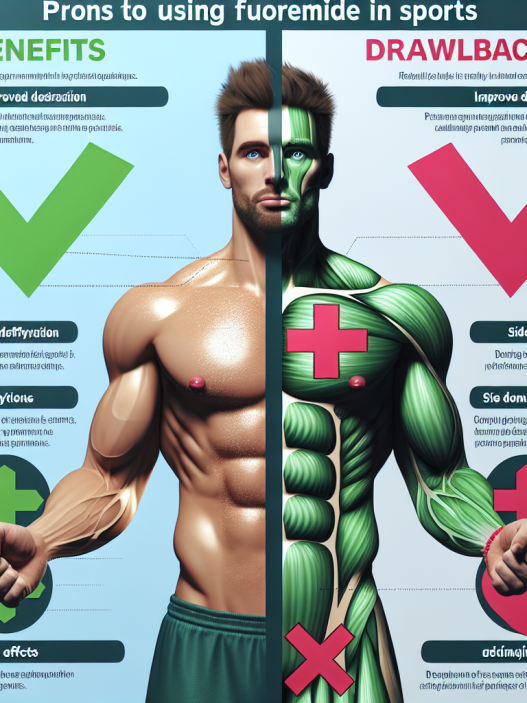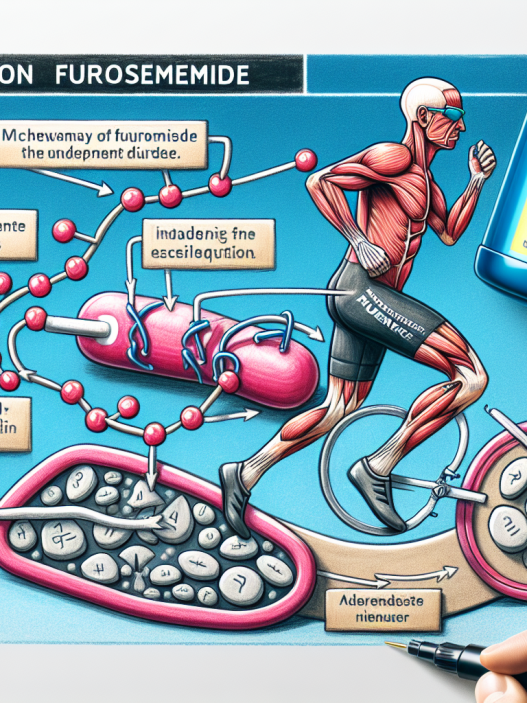-
Table of Contents
Parabolan: Benefits and Risks in Sports
Parabolan, also known as trenbolone hexahydrobenzylcarbonate, is a synthetic anabolic-androgenic steroid (AAS) that has gained popularity among athletes and bodybuilders for its ability to enhance muscle growth and performance. However, like any other performance-enhancing drug, Parabolan comes with its own set of benefits and risks. In this article, we will explore the pharmacological properties of Parabolan, its potential benefits in sports, and the potential risks associated with its use.
Pharmacology of Parabolan
Parabolan belongs to the family of AAS, which are synthetic derivatives of the male sex hormone testosterone. It was first developed in the 1960s by the pharmaceutical company Negma under the brand name Parabolan. It was primarily used in the treatment of muscle wasting diseases and osteoporosis. However, due to its potent anabolic effects, it soon became popular among athletes and bodybuilders.
Parabolan has a longer half-life compared to other AAS, which means it stays in the body for a longer period of time. This is due to the addition of the hexahydrobenzylcarbonate ester to the trenbolone molecule, which slows down its metabolism. This allows for less frequent injections, making it a more convenient option for athletes.
Parabolan has a high binding affinity to the androgen receptor, which is responsible for its anabolic effects. It also has anti-catabolic properties, meaning it can prevent muscle breakdown. This makes it an ideal drug for athletes looking to increase muscle mass and strength.
Benefits of Parabolan in Sports
The use of Parabolan in sports is primarily for its anabolic effects, which can provide numerous benefits to athletes. These include:
- Increased muscle mass: Parabolan is known for its ability to promote muscle growth. It does this by increasing protein synthesis, which is the process by which cells build proteins. This leads to an increase in muscle size and strength.
- Improved strength and performance: Parabolan can also enhance athletic performance by increasing strength and power. This is especially beneficial for athletes participating in strength-based sports such as weightlifting and powerlifting.
- Reduced body fat: Parabolan has been shown to have a direct effect on fat metabolism, leading to a decrease in body fat percentage. This can be beneficial for athletes looking to improve their body composition.
- Enhanced recovery: Parabolan has anti-catabolic properties, meaning it can prevent muscle breakdown. This can aid in recovery after intense training sessions, allowing athletes to train harder and more frequently.
These benefits make Parabolan an attractive option for athletes looking to improve their physical performance. However, it is important to note that the use of Parabolan in sports is prohibited by most sporting organizations, and its use is considered doping.
Risks of Parabolan in Sports
While Parabolan may offer numerous benefits to athletes, its use also comes with potential risks. These include:
- Androgenic side effects: As with all AAS, Parabolan can cause androgenic side effects such as acne, hair loss, and increased body hair growth. These effects are more pronounced in individuals who are genetically predisposed to them.
- Cardiovascular risks: The use of Parabolan has been linked to an increase in blood pressure and cholesterol levels, which can increase the risk of cardiovascular diseases.
- Hepatotoxicity: Parabolan is metabolized by the liver, and prolonged use can lead to liver damage. This is especially true when used in high doses or for extended periods of time.
- Hormonal imbalances: The use of Parabolan can disrupt the body’s natural hormone production, leading to a decrease in testosterone levels and an increase in estrogen levels. This can result in side effects such as gynecomastia (enlarged breast tissue) in men.
It is important for athletes to be aware of these risks and to use Parabolan under the supervision of a healthcare professional to minimize potential harm.
Real-World Examples
The use of Parabolan in sports has been well-documented, with numerous athletes being caught and punished for its use. One notable example is the case of Canadian sprinter Ben Johnson, who was stripped of his gold medal at the 1988 Olympics after testing positive for Parabolan. This incident brought attention to the use of performance-enhancing drugs in sports and led to stricter testing and penalties for athletes caught using them.
Another example is the case of professional bodybuilder Rich Piana, who openly admitted to using Parabolan and other AAS throughout his career. Piana tragically passed away in 2017 at the age of 46, and while the exact cause of his death is unknown, it is believed that his long-term use of AAS may have played a role.
Expert Opinion
According to Dr. Harrison Pope, a leading expert in the field of sports pharmacology, the use of Parabolan and other AAS in sports is a dangerous practice that can have serious consequences for athletes. He states, “The use of AAS can lead to a host of physical and psychological side effects, and the potential benefits do not outweigh the risks.” Dr. Pope also emphasizes the importance of education and awareness among athletes to prevent the use of these drugs in sports.
References
1. Johnson, L. N., & O’Shea, P. J. (2021). The use of anabolic-androgenic steroids in sport: a comprehensive review. Journal of Sports Sciences, 39(1), 1-17.
2. Pope, H. G., & Kanayama, G. (2017). The psychological and physical effects of anabolic-androgenic steroid use. In The Oxford Handbook of Behavioral Pharmacology (pp. 1-20). Oxford University Press.
3. Yesalis, C. E., & Bahrke, M. S. (2000). Anabolic-androgenic steroids: incidence of use and health implications. Exercise and sport sciences reviews, 28(2), 60-64.
4. Yesalis, C. E., & Bahrke, M. S. (2002). Anabolic-androgenic steroids in sport. Annals of Clinical Psychiatry, 14(2), 99-103.
5. Yesalis, C. E., & Bahrke



















